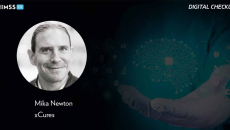Artificial Intelligence
"On average, only half of patients with chronic disease adhere to their care plans and medications as instructed," says one doctor. "Patients expect on-demand support, and that is not how most health systems operate today."
While artificial intelligence (AI) has long been in use in healthcare, the industry is scrambling to deploy the newer and more innovative AI technologies such as generative AI. Data quality, security, and cost, however, are top challenges that are making healthcare organizations pause.
Attendees and panelists discuss what they've learned from the health systems and innovators piloting and implementing leading-edge healthcare technologies at the recent forum.
Health systems need to engage patients, families and clinicians as partners when leveraging AI and other advanced technologies to achieve the best possible care outcomes, says HIMSS Chief Scientific Research Officer Anne Snowdon.
The hospital's central goal of improving patient engagement and care quality has helped it achieve Stage 7 on the AMAM maturity model and more. Jong-Soo Choi, CTO of the Korea health system and a HIMSS25 Changemaker, explains.
Dr. Colin Banas, chief medical officer at DrFirst, says mental health providers quickly adopted telehealth during the pandemic. Now he says he thinks AI agents can help understaffed offices with triage and prescription management.
HIMSS25 Europe
The EHDS promises to advance access to large data sets for research and public health decisions – and ideally enable personalised patient care. AIDAVA was launched to make the latter possible by helping curate and publish individual health data using AI.
Nursing leaders are embracing digital tools that streamline workflows and improve unique connections with patients, says Mary Joy Garcia-Dia, DNP, program director of nursing informatics at NewYork-Presbyterian Hospital and a HIMSS25 Changemaker Awardee.
Researchers and developers have announced artificial intelligence tools that aim to shrink the time mental health providers spend on administrative tasks, provide faster triage, support clinical decision-making and improve patient access.
Mika Newton, CEO of xCures, sees artificial intelligence the only path forward to delivering quality care, as the U.S. doesn't have enough hospitals, doctors or nurses.









